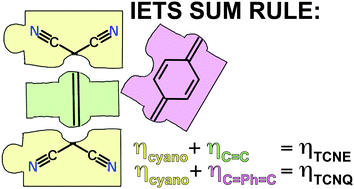A sum rule for inelastic electron tunneling spectroscopy: an ab initio study of a donor (TTF) and acceptors (TCNE, TCNQ and DCNQI) parallelly oriented on Cu(100)†
Abstract
We performed first-principles simulations of Inelastic Electron Tunneling

* Corresponding authors
a
Ecole Normale Supérieure de Lyon, Laboratoire de Chimie, CNRS UMR 5182, 46 Allée d'Italie, 69364 CEDEX07 Lyon, France
E-mail:
mbocquet@ens-lyon.fr
Fax: +33 472 728 860
Tel: +33 472 728 842
We performed first-principles simulations of Inelastic Electron Tunneling

 Please wait while we load your content...
Something went wrong. Try again?
Please wait while we load your content...
Something went wrong. Try again?
S. R. Burema and M. Bocquet, Phys. Chem. Chem. Phys., 2013, 15, 16111 DOI: 10.1039/C3CP53049C
To request permission to reproduce material from this article, please go to the Copyright Clearance Center request page.
If you are an author contributing to an RSC publication, you do not need to request permission provided correct acknowledgement is given.
If you are the author of this article, you do not need to request permission to reproduce figures and diagrams provided correct acknowledgement is given. If you want to reproduce the whole article in a third-party publication (excluding your thesis/dissertation for which permission is not required) please go to the Copyright Clearance Center request page.
Read more about how to correctly acknowledge RSC content.
 Fetching data from CrossRef.
Fetching data from CrossRef.
This may take some time to load.
Loading related content
